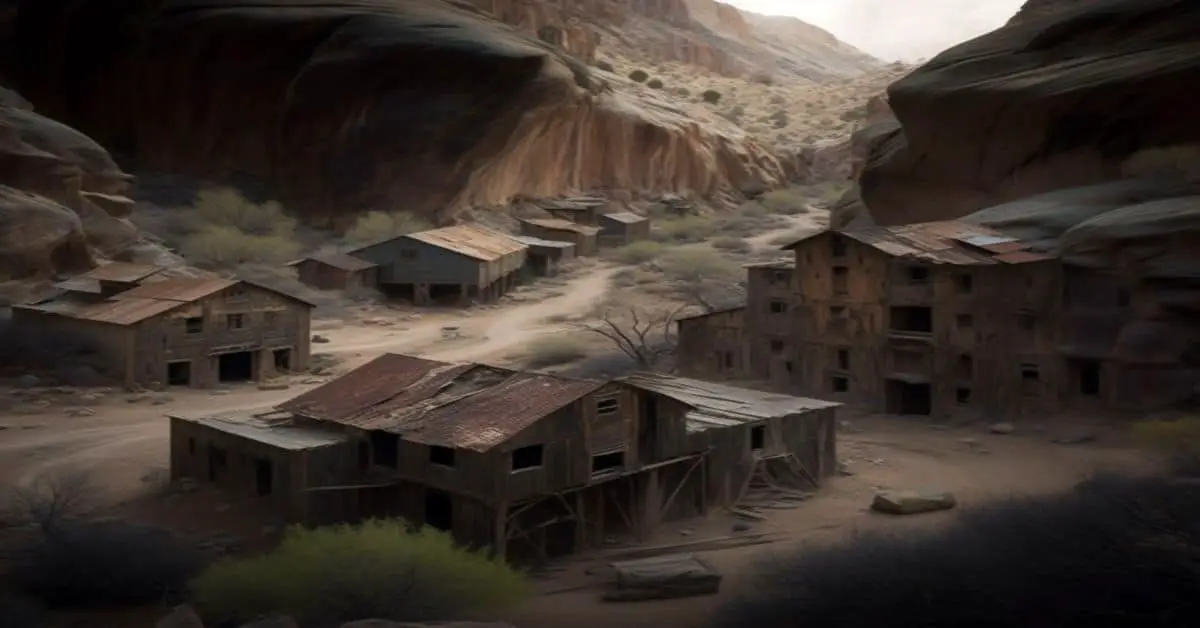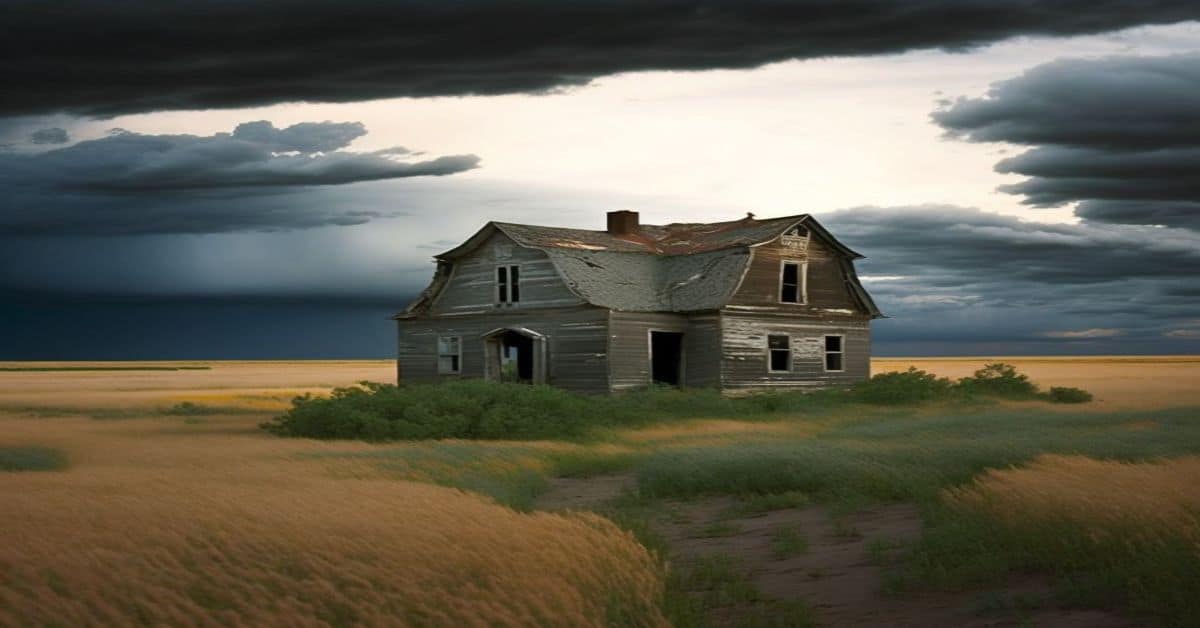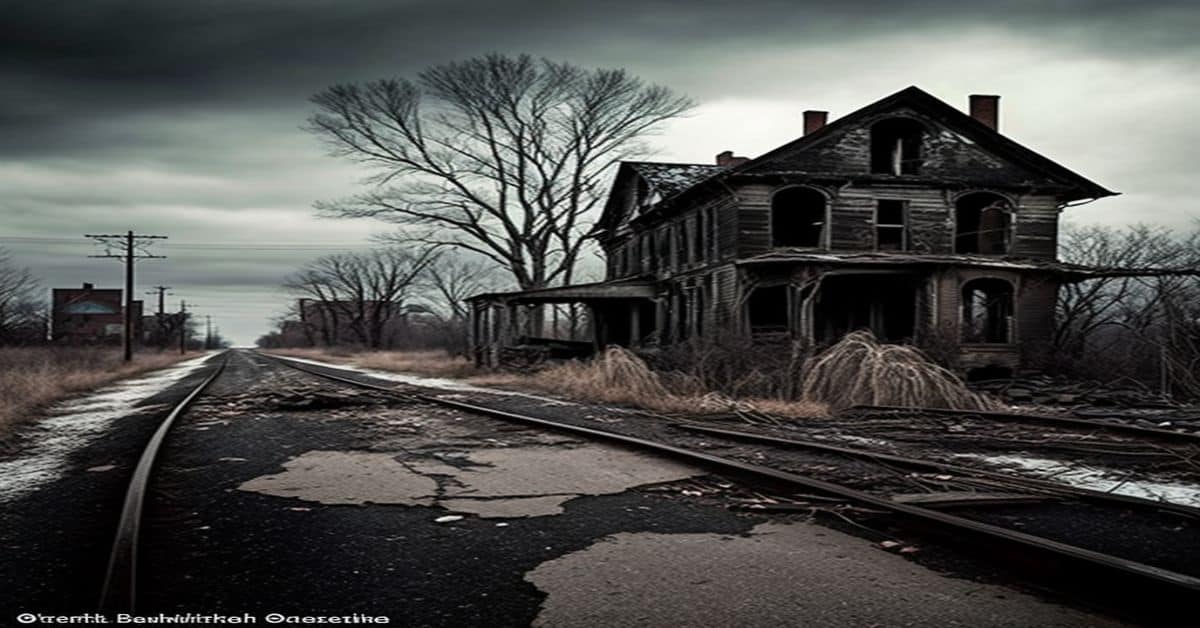The small town of Adobe Walls in Hutchinson County, Texas, may have faded into obscurity, but its tragic history continues to resonate through the region.
In the late 1800s, the settlement was the site of a violent attack by Indian warriors, which marked the beginning of the end for Adobe Walls.
Today, very little remains of the town, but it is a registered Texas Archeological Landmark, and its ghostly remnants continue to attract visitors and historians alike.
The story of Adobe Walls is a testament to the struggles of early settlers and the violence and upheaval that marked the American West in the 19th century.
Despite numerous attempts to establish a permanent settlement in the region, the harsh conditions, including drought, extreme temperatures, and hostile native tribes, made life difficult for those who called the area home.
The attack on Adobe Walls, which is considered one of the most significant battles between Native Americans and settlers in Texas history, marked a turning point in the region’s history and signaled the end of an era for the settlers who had tried to make a life in the unforgiving landscape of the American West.
Key Takeaways
- Adobe Walls was established as a trading post among Comanche and Kiowa Indians and grew with the help of hunting crews from western Kansas.
- The settlement faced harsh conditions, including drought and hostile tribes, and was ultimately attacked by over 700 Comanche, Kiowa, and Cheyenne warriors in 1874.
- Preservation efforts have been made to protect the remaining adobe walls and archaeological remains, including stabilizing walls and installing signage for visitors.
- The attack at Adobe Walls is considered a significant battle between Native Americans and settlers in Texas history and serves as a reminder of the tragic events that occurred in 1874.
History and Settlement Attempts
The settlement at Adobe Walls was established in an effort to create a trading post among the Comanche and Kiowa Indians. However, this attempt was ultimately unsuccessful. Instead, hunting crews from western Kansas began to move southward into the area in 1873-1874, and merchants from Dodge City, Kansas followed them into the new buffalo range. Several hundred hide men were in the Texas Panhandle killing bison by the thousands. These factors contributed to the growth of the settlement and the economy of the region.
However, this growth did not last. On June 27, 1874, Indian warriors attacked the settlement at Adobe Walls. The attack continued until the middle of the afternoon, and the Indians retreated into the nearby hills. This event marked the beginning of the end of Adobe Walls, as the settlement could not recover from the attack and eventually faded into obscurity.
Despite the unsuccessful trading post efforts, the site remains an important part of Texas history.
Attack on Adobe Walls
Following the unsuccessful attempt to establish a trading post among the Comanche and Kiowa Indians, the settlement at Adobe Walls was eventually doomed as the Indian attack on June 27, 1874, acted as a fatal blow to the burgeoning community, like a sudden thunderstorm destroying a budding flower.
The attack was carried out by a group of over 700 Comanche, Kiowa, and Cheyenne warriors who were incensed by the buffalo hunting tactics of the hide men in the region. The hide men were notorious for killing thousands of bison indiscriminately, leading to a drastic reduction in the buffalo population, which the Native Americans depended on for survival.
The attack on Adobe Walls culminated years of tension between the Comanche and Kiowa tribes and the hide men. The warriors viewed the hide men as a threat to their way of life, and their attack was an attempt to drive them out of the region.
Although the hide men were heavily outnumbered, they managed to hold out until mid-afternoon, when the Indians retreated into the nearby hills. The attack marked the beginning of the end for the settlement at Adobe Walls, which was abandoned soon after.
Current State and Preservation
Currently, the site of the former settlement at Adobe Walls is a registered Texas Archeological Landmark in Hutchinson County, and efforts have been made to preserve what little remains of the historic location. The site attracts visitors who are interested in the history of the American West, and it serves as a reminder of the tragic events that occurred there in 1874.
Preservation efforts have included stabilizing the remaining adobe walls, installing interpretive signage to educate visitors about the site’s history, and limiting access to protect the fragile archaeological remains.
Future plans to preserve Adobe Walls include continued efforts to protect and interpret the site for future generations. The Hutchinson County Historical Commission has expressed an interest in creating a museum or visitor center nearby to provide additional context and information about the area’s history. Additionally, ongoing archaeological research at the site may uncover new information about the events that occurred there and further enhance our understanding of this important moment in American history.
Frequently Asked Questions
What was the impact of the Indian attack on the settlement at Adobe Walls?
The Indian attack on the settlement at Adobe Walls significantly impacted the settlers, resulting in multiple casualties and the destruction of the trading post. This retaliation marked the beginning of the end for Adobe Walls and its inhabitants.
How did the hunting crews from western Kansas contribute to establishing Adobe Walls?
Hunting traditions of western Kansas contributed to establishing the trading post at Adobe Walls. The site utilized adobe architecture and was home to several hundred hide men who killed bison in the Texas Panhandle.
What was the primary reason for the unsuccessful effort to establish a trading post among the Comanche and Kiowa Indians?
The primary reasons for the unsuccessful effort to establish a trading post among the Comanche and Kiowa Indians were cultural barriers. The different ways of life, beliefs, and values of the tribes clashed with those of the traders, leading to a lack of trust and mutual understanding.
What is the site’s current state, and what efforts have been made to preserve it?
The site of Adobe Walls is a registered Texas Archeological Landmark with very little remaining. Preservation efforts have been made to protect its historical significance, including excavation and documentation of artifacts and structures.
Are there any other notable landmarks or attractions near Adobe Walls that visitors might be interested in?
Nearby attractions to Adobe Walls include the Lake Meredith National Recreation Area and the Panhandle-Plains Historical Museum. Historic preservation efforts have been made to protect the site, which is a Texas Archeological Landmark.


